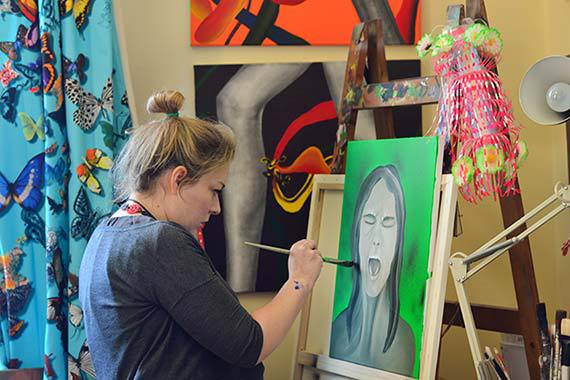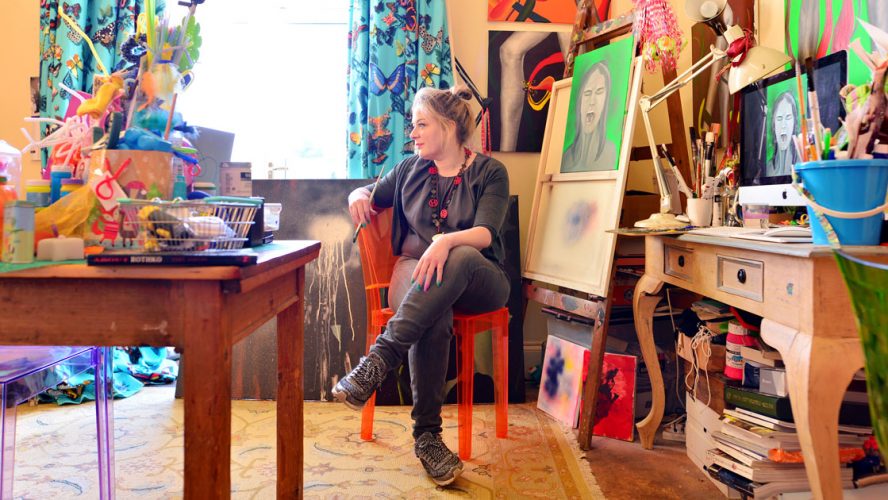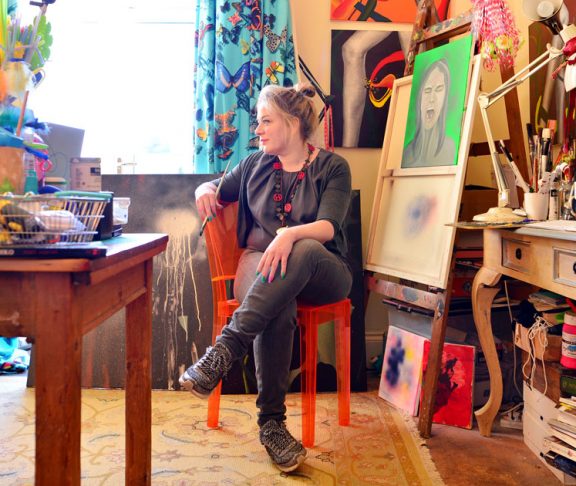Chronic pain can make life a difficult and isolating experience, but with the right medication and support the condition can be managed.
A chest infection turned into a lifelong condition
Chronic pain can make life a difficult and isolating experience, but with the right medication and support the condition can be managed.
At 12 years old, Emma Scott-Smith picked up a chest infection that her GP prescribed antibiotics to treat. Less than 24 hours later though, far from feeling better, Emma was screaming in agony.
“I had a bad reaction to the medication,” says Emma. “The pain in my spine was excruciating.”
While her spine was physically undamaged, the pain was constant.
The incident marked the beginning of a journey that, 25 years later, Emma is still travelling. The severity of her condition put an end to her schooling and confined her to bed for the next 18 months, a period she describes as being “very isolating”.
While her spine was physically undamaged, the pain was constant. It was only when her medical team recommended a treatment plan with opioids that Emma began to get some semblance of her life back.
The medication “made the pain bearable and allowed me to function,” she says.
Creating art out of pain
It was during that time that Emma turned to art for solace. While she had always enjoyed painting, as a virtual prisoner in her own home, art became a refuge. She painted relentlessly and by the age of 16 had begun to exhibit her work in public galleries. Emma describes painting as being “psychologically helpful for getting the pain out of me and onto the canvas.”
Although her spine was physically undamaged, she was diagnosed as suffering from chronic spinal pain and was reliant on a wheelchair for most of her adult life.
While a schedule of medication and doctor’s appointments are still a feature of Emma’s life, she is now a professional abstract and installation artist, and one who regularly exhibits her work internationally.

Emma painted the cover image for our campaign’s print publication, scroll down to learn more.
“My art explains how it feels to be trapped in a body, when you look perfectly fine but you’re not,” she says. “Pain is so personal, which can make it difficult to relate to other people’s experience. In my art I try to visually reflect that. To communicate the experience of pain.”
Not surprisingly, given all the obstacles she’s faced, hope forms another major theme in Emma’s work: as well as being an artist, she’s also mother to a young son and a university lecturer in psychology. “Art can give comfort to people and I feel fortunate that I’m able to do this,” she says.
Coping with the pain
Emma attends a pain clinic where she benefits from a multi-disciplinary approach to her condition, and regularly checks in with a pain psychologist and physiotherapist who help her ‘tackle the pain in multiple ways.’
Although dependent on opioids, Emma is not addicted – thanks to proper management.
Although dependent on opioids to manage her condition, Emma is not an addict, and is an example that proper management of opioids can help improve the quality of someone’s life. The opioids allow her to function, to hold down a job and raise a family. They provide her with a quality of life she would not otherwise have. Without them, she says, she would be “screaming in pain.”
Reliant on a wheelchair for 17 years, using opioids enables Emma to keep her pain under control. Now she can walk short distances and live a reasonably active life. Her husband and parents provide solid support with physical tasks around the house as well as helping her bring up her son. “It can be difficult to cope with pain, but it can be managed”, she says. “It’s important to know what the options are, so you can be supported.”


